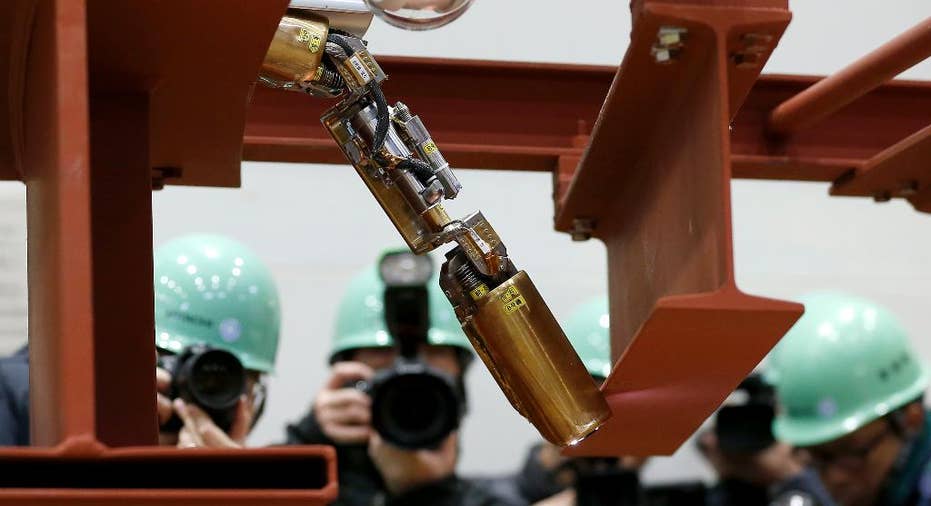Japan readies first robot to probe melted Fukushima nuclear reactor core

HITACHI, Japan – A snake-like robot designed to examine the inside of one of three melted reactors at the Fukushima Dai-ichi nuclear plant is ready to begin its expedition.
Assessing the damage inside the reactors is a crucial step in the decommissioning of the plant, which was badly damaged by a 2011 earthquake and tsunami. Use of a remote-controlled robot is essential because no humans can go close to the reactor chambers because of their fatally high radiation levels.
Using information gathered by the robot, the plant operator, Tokyo Electric Power Co., plans to repair the damaged chambers enough so they can be filled with water in preparation for the removal of melted radioactive debris, planned in about a decade.
The 60-centimeter (2-foot) -long robot, developed by electronics giant Hitachi and its nuclear affiliate Hitachi-GE Nuclear Energy, was demonstrated this week at a Hitachi-GE facility in Hitachi, northeast of Tokyo.
It has a lamp at the front and is designed to crawl like a snake through a 10-centimeter (4-inch) wide pipe into the containment vessel. From there it must dangle and descend onto a steel-mesh platform just below the reactor core.
There, the robot is to transform into a U-shape auto-drive crawler and capture live images and temperature and radiation levels and transmit them to a control station outside the building.
After its trip, technicians plan to store the robot in a shielded box because of its extremely high radioactivity, and it will not be reused. Different robots must be designed for each reactor, since all are slightly different.
Computer simulations indicate that all of the fuel rods in the Unit 1 reactor probably melted and fell to the bottom of the containment chamber, but until now there has been no way of confirming that. A brief fiberscope observation was conducted in 2012 but the images were scratchy and limited.
Because of the reactor damage, large volumes of cooling water continue to leak from them, causing contamination and hampering the plant's cleanup process.
___
Associated Press writer Mari Yamaguchi in Tokyo contributed this report.
___
Follow Mari Yamaguchi on Twitter at twitter.com/ mariyamaguchi



















